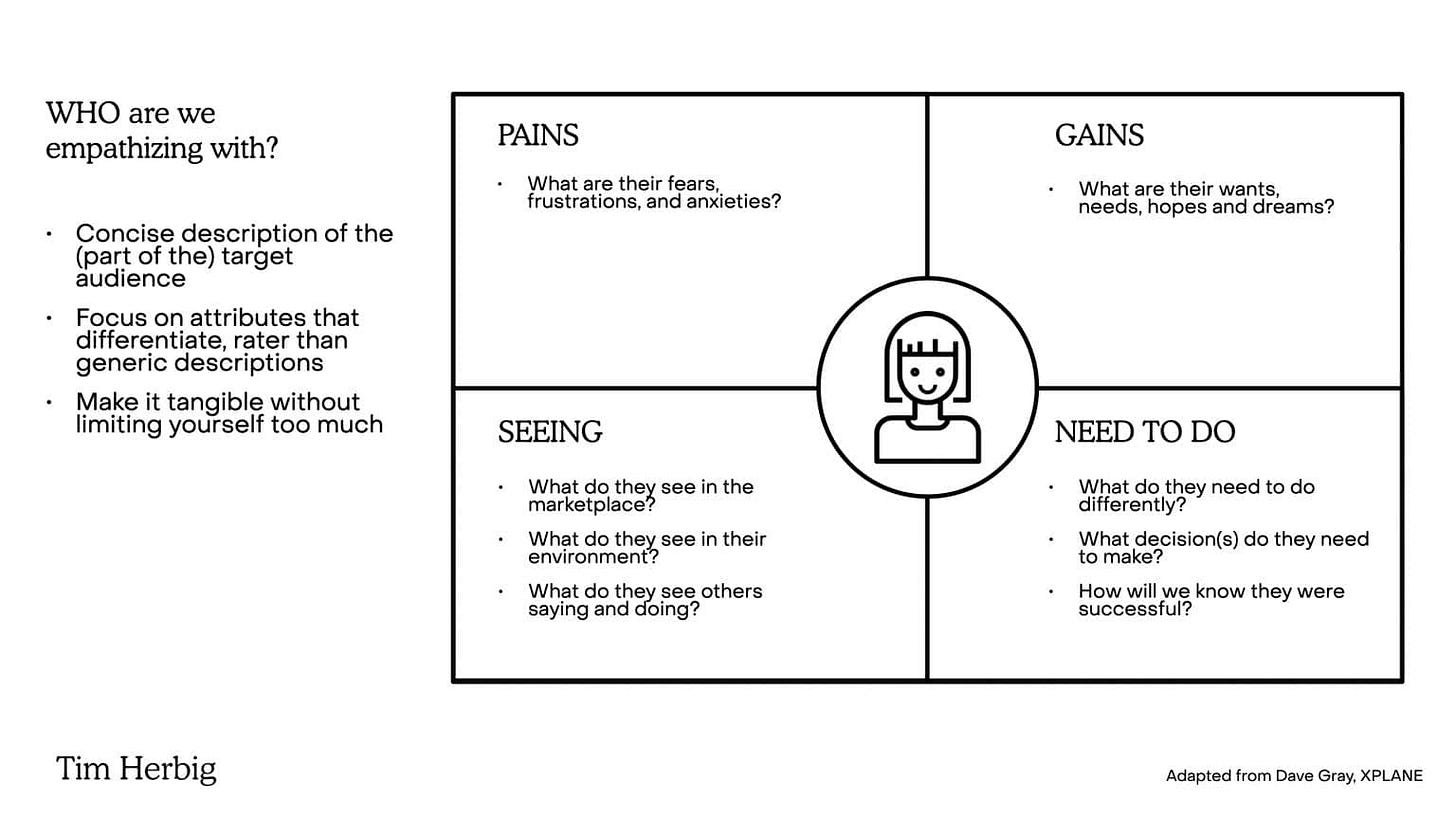Create a Compelling Vision for Your Association
Resist the Tyranny of Short-Term Thinking
Vision is the compelling description of a successful outcome.
It’s important to define a vision everyone buys into, believes in, and works toward.
As we’ve discussed in this newsletter, an association product can be anything as simple as a podcast, webinar, simple game, or short course; it can be as complex and multifaceted as a piece of software or a carnival-like, choice-driven vehicle like an annual event.
The difference is in how the products are created. Product communities push association leaders to be integrative and action-oriented pushing for focused, growth outcomes that are repeatable in nature.
This repetition focuses exclusively on creating value for member customers that desire connection and longitudinal journeys.
It also results in getting better and better honing this value and, ultimately, growing an indispensable community of practice.
And you can’t do any of this without a compelling product vision.
Vision is one of six association product competencies. The others are culture, customer, design + build, go to market, and performance.
Singular + Exciting
Great visions drive focus and push an association’s energy around a singular and exciting future.
They can be derived by answering these questions:
What problem does my association seek to solve?
Why do we believe this problem needs to be addressed?
Does this problem matter to our current or prospective members?
What business are we in? What business are we not in?
What are the greatest strengths of our association?
What makes us special and unique? What are our differentiators?
What is our dream for this association?
How would things be different if our dream came true?
Does our dream connect on a personal level with others?
What is our winning aspiration? What does success look like?
The concept and process used for an association-wide vision is similar to how to derive a product vision, whether for say for an annual conference, monthly journal, or learning game.
A Great Vision Attracts Like a Magnet
Being too broad (“all things to all people'') under the premise that you want unfettered access to as many markets as possible is a common trap.
This ‘spray and pray’ approach only results in needless commoditization of your core value driven by an oatmeal-like vision.
While it’s nearly impossible to predict the future, it is possible to describe the future in a way that is clear, focused, and based firmly in community.
Vision is everything. It defines a shared future and, if it’s specific enough, often a great way to build a healthy culture.
A great vision attracts like a magnet.
It defines key product information and can be phrased in one inspiring sentence that incorporates the target group, customer needs, the product’s unique selling points, and the business goals.
A great vision is specific enough to result in deep ownership and extend to everyday practice.
Individual product visions are aligned with the association’s broader vision and organizational priorities.
In the product community, there are many tools that could be utilized to help develop a vision: ideal state outcomes (ISO), Business Model Canvas, or empathy map (see accompanying graphic from Tim Herbig).
The empathy map is powerful as it pushes you to think deeply about who your customer member is, what they care about, and what problems they need solve.
It helps you create a human-centered vision that’s easy for everyone to rally around with deep emotional commitment.
Like we said at the beginning of this article, it’s important to define a vision everyone buys into, believes in, and works toward.
Look at successful organizations: They spend the time to come up with their own unique vision.
Alignment and a clear direction are key ingredients to creating things people love.
Remember, product-led growth fuels connection. Join the product community and flip your destiny.
About the Author
James Young is founder and chief learning officer of the product community®. Jim is an engaging trainer and leading thinker in the worlds of associations, learning communities, and product development. Prior to starting the product community®, Jim served as Chief Learning Officer at both the American College of Chest Physicians and the Society of College and University Planning.
Please contact me for a conversation: james@productcommunity.us.



